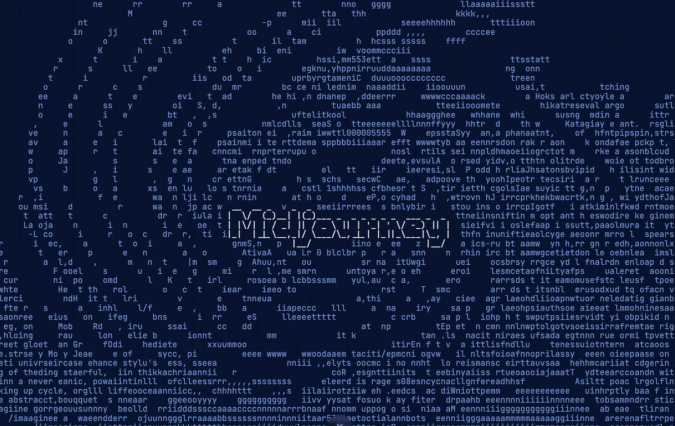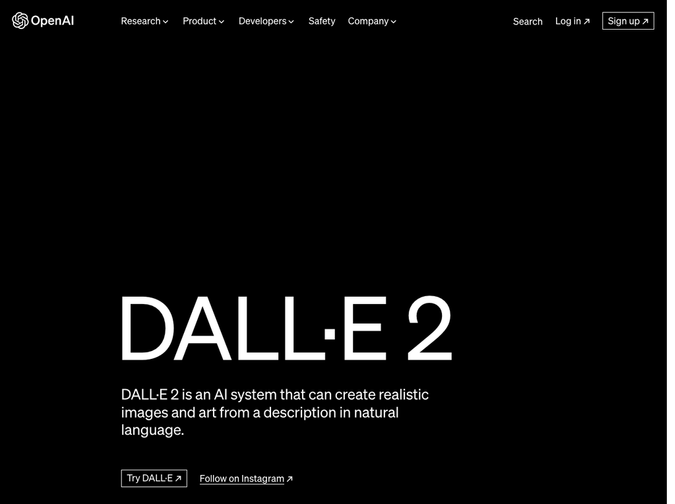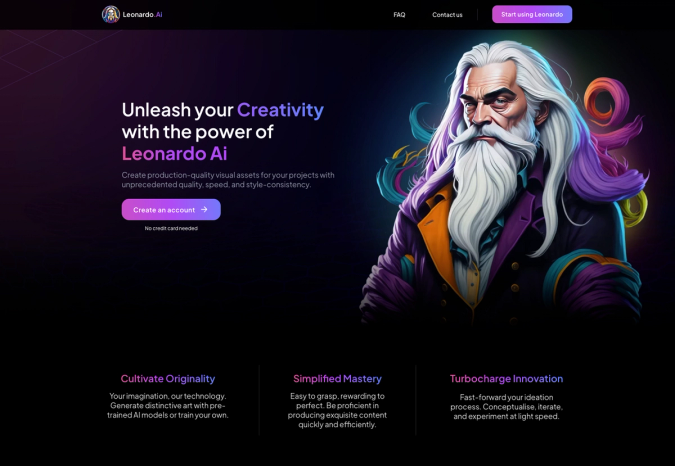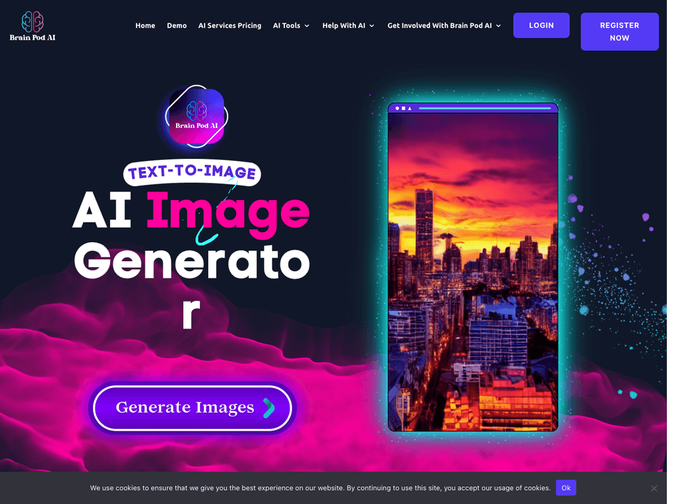AI Image Generation: How Artificial Intelligence is Reshaping Visual Content Creation

Realted AI tools
Unlock Your Creative Potential Combine AI with Creative Tools
AI Image Generation: How Artificial Intelligence is Reshaping Visual Content Creation
Artificial intelligence (AI) has revolutionized numerous industries, and now it's reshaping the world of visual content creation. With AI image generation, businesses and individuals can produce high-quality visuals that are almost indistinguishable from those created by human artists. This groundbreaking technology has introduced new possibilities for marketers, designers, and photographers alike.
By leveraging the power of deep learning algorithms, AI image generation can produce stunning visuals in record time. Gone are the days of meticulously editing and retouching images – AI can now automatically enhance, colorize, and even generate entirely new visuals based on a given input. This not only saves time and resources but also opens up avenues for creative experimentation.
Whether you need captivating product images for e-commerce, eye-catching illustrations for marketing campaigns, or realistic visuals for virtual reality experiences, AI image generation is the game-changer you've been waiting for. By harnessing the capabilities of AI, businesses can level up their visual content and make a lasting impact on their target audience.
Elevate your visual content creation with AI image generation and unlock a world of possibilities. Stay ahead of the curve and embrace this cutting-edge technology to create visually stunning content that engages and captivates your audience.
The role of artificial intelligence in visual content creation
Artificial intelligence plays a pivotal role in visual content creation. Traditionally, creating visually appealing content required skilled designers or photographers who would spend hours perfecting their craft. However, with AI image generation, the process becomes more efficient and accessible to a wider range of individuals and businesses.
AI algorithms analyze vast amounts of visual data and learn from patterns and features, allowing them to generate realistic and high-quality images. These algorithms can mimic the artistic style of famous painters, generate lifelike characters for video games, or even transform a sketch into a photorealistic image. By automating these tasks, AI image generation empowers content creators to focus more on their creative vision and less on the technical aspects of image editing.
Advantages of AI image generation
There are several advantages to using AI image generation in visual content creation. Firstly, it significantly reduces the time and effort required to produce high-quality visuals. AI algorithms can generate images in a matter of seconds or minutes, compared to hours or days it may take for a human artist to create the same image. This allows businesses to streamline their content creation process and meet tight deadlines.
Secondly, AI image generation eliminates the need for extensive manual editing and retouching. With AI, images can be automatically enhanced, colorized, and optimized for specific platforms or target audiences. This not only saves time but also ensures consistent quality across a range of visual content.
Additionally, AI image generation opens up new avenues for creative experimentation. Artists and designers can use AI algorithms to explore different artistic styles, generate novel compositions, or even blend multiple images together seamlessly. This level of creative freedom encourages innovation and enables content creators to produce truly unique and captivating visuals.
AI image generation techniques and technologies
AI image generation relies on a variety of techniques and technologies to produce visually stunning results. One of the most common techniques is Generative Adversarial Networks (GANs). GANs consist of two neural networks: a generator network that synthesizes images and a discriminator network that evaluates the generated images. Through continuous feedback and training, GANs can produce increasingly realistic and high-quality visuals.
Another technique used in AI image generation is Variational Autoencoders (VAEs). VAEs are capable of learning the underlying structure of a dataset and generating new images based on that structure. By mapping the data to a lower-dimensional space, VAEs can generate diverse and novel images.
In addition to GANs and VAEs, other techniques such as Deep Dream and Neural Style Transfer have also gained popularity in AI image generation. Deep Dream uses neural networks to enhance and exaggerate patterns in images, creating surreal and dream-like visuals. Neural Style Transfer, on the other hand, allows artists to transfer the style of one image onto another, resulting in unique and visually striking compositions.
Applications of AI image generation in various industries
AI image generation has found applications in various industries, transforming the way visual content is created and consumed. In the e-commerce industry, AI-generated product images can showcase products in a realistic and appealing manner, enhancing the shopping experience for customers. Virtual try-on technologies, powered by AI, allow customers to visualize how products would look on them before making a purchase.
The marketing and advertising industry has also embraced AI image generation to create eye-catching visuals that capture the attention of consumers. AI algorithms can analyze consumer preferences and generate personalized advertisements that resonate with target audiences. This level of personalization can significantly improve engagement and conversion rates.
In the entertainment industry, AI image generation has been used to create lifelike characters for movies, video games, and virtual reality experiences. AI algorithms can generate realistic facial expressions, body movements, and even simulate natural environments, immersing audiences in a truly captivating and interactive experience.
Case studies of successful AI image generation projects
Several successful AI image generation projects have demonstrated the power and potential of this technology. One notable example is the "DeepArt" project, which allows users to transform their photos into artistic masterpieces using various artistic styles. By leveraging neural networks and AI algorithms, DeepArt has empowered individuals to become digital artists and create stunning visuals with just a few clicks.
Another case study is "GANpaint Studio," a project that enables users to interactively edit images by adding or removing objects. By leveraging GANs, users can easily manipulate images and experiment with different compositions, empowering them to unleash their creativity and produce visually impactful content.
Ethical considerations in AI image generation
While AI image generation brings numerous benefits, it also raises ethical considerations. One concern is the potential misuse of AI-generated images for deceptive or malicious purposes. AI algorithms can generate highly realistic "deepfake" images or videos that are indistinguishable from real ones. This poses risks in terms of misinformation, identity theft, and privacy invasion.
Another ethical concern is the potential bias present in AI algorithms. If the training data used to train the AI models is biased, it can lead to biased or discriminatory outputs. For example, AI image generation algorithms trained on a dataset that lacks diversity may generate visuals that perpetuate stereotypes or exclude certain demographics.
To address these concerns, it is crucial to develop and adhere to ethical guidelines for AI image generation. Transparency in the use of AI-generated visuals, clear labeling of AI-generated content, and responsible data collection and usage are some of the measures that can help mitigate ethical risks.
Challenges and limitations of AI image generation
Despite its advancements, AI image generation still faces several challenges and limitations. One challenge is the need for large amounts of high-quality training data. AI algorithms require vast datasets to learn from, and obtaining such datasets can be challenging, especially for niche or specialized domains.
Another limitation is the lack of interpretability in AI-generated images. While AI algorithms can generate visually appealing images, understanding the underlying reasoning or decision-making process of the algorithms can be difficult. This limits the ability to fine-tune or modify the generated images to meet specific requirements.
Additionally, AI image generation may not fully replace human creativity and artistic expression. While AI algorithms can mimic certain artistic styles or generate novel compositions, they may lack the depth, emotion, and originality that human artists bring to their work.
The future of AI image generation
The future of AI image generation looks promising. As technology advances, AI algorithms will become more sophisticated and capable of producing even more realistic and creative visuals. The integration of AI image generation with other emerging technologies such as augmented reality (AR) and virtual reality (VR) will further enhance the immersive and interactive experiences for users.
Additionally, the ethical considerations and limitations of AI image generation will continue to be addressed and improved upon. Stricter regulations, increased transparency, and advancements in ethical AI practices will help ensure the responsible and ethical use of AI-generated visuals.
In conclusion, AI image generation has revolutionized the world of visual content creation. It offers numerous advantages, including time and resource savings, creative experimentation, and consistent quality. However, it also raises ethical concerns and faces limitations that need to be addressed. By embracing AI image generation and understanding its capabilities and limitations, businesses and individuals can unlock a world of possibilities and create visually stunning content that engages and captivates their audience.
Elevate your visual content creation with AI image generation and stay ahead of the curve. Embrace this cutting-edge technology and unleash your creativity like never before.
Conclusion
AI image generation is still in its infancy, but its potential is vast. As technology continues to advance, we can expect even more remarkable developments in the field. Here are some key areas where AI image generation is set to make a significant impact:
### 1. E-commerce and Product Imagery
In the highly competitive world of e-commerce, captivating product imagery can make all the difference. AI image generation allows businesses to create stunning visuals that showcase their products in the best possible light. With AI, product images can be automatically enhanced, removing imperfections and enhancing colors to create a polished and professional look. Additionally, AI can generate realistic 3D renderings of products, providing customers with a lifelike representation of what they can expect. This not only improves the overall customer experience but also increases the likelihood of conversions.
### 2. Marketing and Advertising Campaigns
Visual content plays a crucial role in marketing and advertising campaigns. It's what catches the audience's attention and communicates the message effectively. With AI image generation, marketers and designers can create eye-catching illustrations and graphics that align with their brand identity. AI can automatically generate visuals based on specific keywords or concepts, saving time and effort in the creative process. This opens up opportunities for marketers to experiment with different visual styles and iterate quickly to find the most effective approach. The result is visually compelling content that resonates with the target audience and drives engagement.
### 3. Virtual Reality and Augmented Reality
Virtual reality (VR) and augmented reality (AR) are rapidly growing industries that rely heavily on immersive visual experiences. AI image generation can contribute to these technologies by creating realistic and high-resolution visuals that enhance the overall user experience. AI can generate detailed textures, lighting effects, and even entire environments, making VR and AR experiences more immersive and believable. This technology opens up new possibilities for industries such as gaming, architecture, and interior design, where realistic virtual environments are crucial.
### 4. Creative Collaboration
AI image generation is not just about replacing human artists; it's about enhancing their creative capabilities. AI can assist artists and designers by generating initial concepts or providing inspiration for their work. By leveraging the power of AI, creators can explore new artistic styles and push the boundaries of their creativity. This collaboration between AI and human artists can lead to innovative and visually stunning results that would not have been possible otherwise.



